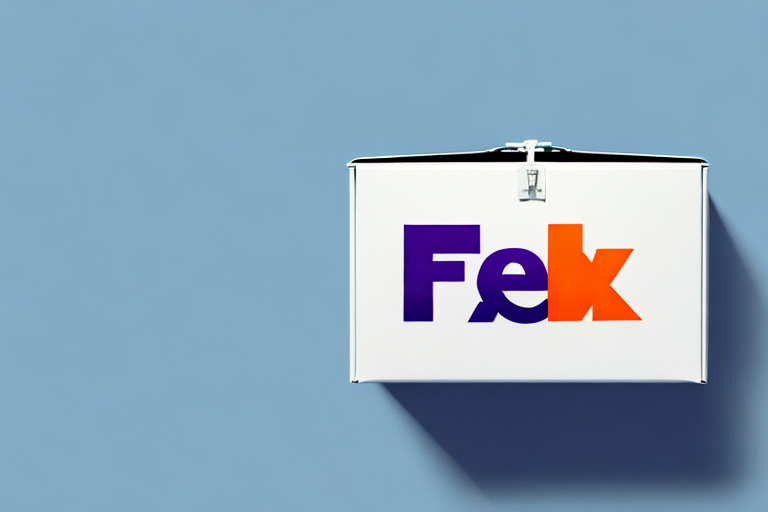15 Trends That Will Make or Break Ecommerce Brands
In today's fast-paced and ever-evolving digital landscape, ecommerce has solidified its position as a cornerstone of modern business. With intense competition and rapidly shifting consumer behaviors, it's essential for ecommerce brands to stay ahead by embracing the latest trends. This article delves into 15 pivotal trends that could determine the success or failure of ecommerce brands in the coming years.
Introduction: The Importance of Keeping Up with Ecommerce Trends
The ecommerce ecosystem is in a state of constant flux, driven by technological advancements and changing consumer expectations. Brands that fail to adapt to these changes risk losing their competitive edge and market share. Staying informed about the latest trends enables ecommerce businesses to enhance customer experiences, boost conversion rates, and differentiate themselves in a saturated market.
One of the most significant advancements is the integration of artificial intelligence (AI) and machine learning. These technologies empower businesses to personalize marketing efforts, refine search algorithms, and automate customer service, leading to a more seamless and efficient shopping experience. According to a Shopify report, personalized experiences can increase conversion rates by up to 10%, underscoring the importance of AI in ecommerce.
Trend #1: Personalization in Ecommerce
Personalization is no longer a luxury but a necessity in ecommerce. By leveraging data and analytics, businesses can tailor shopping experiences to individual preferences and behaviors. This includes personalized product recommendations, targeted email campaigns, and customized landing pages. According to Salesforce, 80% of consumers are more likely to make a purchase when brands offer personalized experiences.
- Product Recommendations: Utilizing AI to suggest products based on browsing history and past purchases.
- Targeted Marketing: Creating email campaigns that address the specific needs and interests of different customer segments.
- Customized Content: Developing landing pages that resonate with individual user preferences.
Personalization not only boosts customer loyalty but also enhances satisfaction, leading to repeat purchases and sustained business growth.
Trend #2: Mobile-Friendly Design
With mobile devices accounting for over 54% of global web traffic (Statista), having a mobile-friendly website is imperative for ecommerce success. Responsive design ensures that websites perform seamlessly across all devices, providing a consistent user experience.
Additionally, developing mobile applications can further enhance user engagement and convenience. Mobile apps offer features like push notifications, personalized offers, and easy checkout processes, which can significantly boost conversion rates. Recent studies indicate that mobile users are 70% more likely to return to a site with a dedicated mobile app (Business Insider).
Trend #3: Social Media Integrations
Social media platforms have evolved into powerful sales channels for ecommerce businesses. Integrating social media into your ecommerce strategy allows brands to engage with customers on a more personal level and reach a broader audience. This includes promoting products through social media, running targeted advertising campaigns, and enabling social logins for easy account creation.
Social commerce, the practice of selling products directly through social media platforms like Facebook and Instagram, simplifies the buying process, reducing friction and increasing conversion rates. According to Forbes, social commerce sales are expected to surpass $1 trillion by 2025.
- Customer Engagement: Creating interactive content and responding to customer inquiries in real-time.
- Influencer Partnerships: Collaborating with influencers to expand reach and build trust.
- Shoppable Posts: Enabling direct purchases through social media posts and stories.
Trend #4: Augmented Reality Technology
Augmented Reality (AR) is transforming the online shopping experience by allowing customers to visualize products in their real-world environment before making a purchase. This technology is particularly impactful in industries like fashion and home decor, where seeing a product in context can influence buying decisions.
For instance, virtual try-ons for clothing and accessories enable customers to see how items look on them without physical trials. Similarly, 3D product visualizations for furniture allow consumers to place items in their homes virtually, enhancing confidence in their purchase decisions. According to a Wareable report, AR can reduce return rates by up to 30% by providing a clearer understanding of the product.
Trend #5: Voice Search Optimization
The proliferation of voice-activated devices like Amazon Alexa and Google Assistant is changing how consumers search for products online. Optimizing ecommerce sites for voice search can enhance visibility and accessibility.
Voice searches typically involve more natural, conversational language and longer query phrases. Therefore, businesses should focus on optimizing for long-tail keywords and creating content that directly answers specific questions consumers might ask. Implementing structured data markup can also help search engines better understand and prioritize your content in voice search results.
- Conversational Content: Writing in a natural, Q&A format to align with voice search queries.
- Local SEO: Ensuring that business information is accurate and optimized for local search results.
- Mobile Optimization: Ensuring rapid load times and a seamless experience on mobile devices, as many voice searches are conducted on smartphones.
Trend #6: Subscription-Based Services
Subscription models offer ecommerce businesses a steady stream of recurring revenue and foster long-term customer relationships. From subscription boxes curated around specific themes to auto-replenishment services for everyday essentials, these models cater to diverse consumer needs.
Subscription services provide predictability in revenue and help in inventory management. They also offer personalized experiences, as businesses can tailor offerings based on subscriber preferences. According to a Forbes article, subscription-based businesses enjoy higher customer retention rates, with subscribers showing a 70% higher lifetime value than one-time purchasers.
- Recurring Revenue: Ensures a stable income stream, aiding in financial planning and scalability.
- Customer Loyalty: Builds a community of engaged customers who anticipate and rely on regular deliveries.
- Personalization: Allows for tailored experiences and exclusive content, increasing perceived value.
However, it's crucial to price subscriptions appropriately and continuously deliver value to retain subscribers and minimize churn rates.
Trend #7: Artificial Intelligence and Machine Learning
Artificial Intelligence (AI) and Machine Learning (ML) are at the forefront of ecommerce innovation, enabling businesses to analyze vast amounts of data and make informed decisions. These technologies enhance various aspects of ecommerce operations, from customer service to inventory management.
AI-powered chatbots provide instant customer support, handle inquiries, and offer product recommendations, thereby improving user experience and operational efficiency. Machine learning algorithms can predict consumer behavior, optimize pricing strategies, and enhance supply chain logistics. According to McKinsey, AI-driven personalization can lead to a 10-30% increase in revenue for ecommerce businesses.
- Automated Customer Service: Reduces the need for human intervention and speeds up response times.
- Predictive Analytics: Anticipates trends and customer needs, allowing for proactive inventory management.
- Fraud Detection: Identifies and prevents fraudulent transactions through pattern recognition and anomaly detection.
Trend #8: Localization for Global Markets
As ecommerce businesses expand internationally, localization becomes critical to cater to diverse markets. Localization involves adapting content, currencies, languages, and shipping options to meet the specific needs of different regions. This ensures that the shopping experience is relevant and accessible to a global audience.
Effective localization can significantly enhance customer trust and satisfaction. It demonstrates cultural sensitivity and understanding, which are crucial for building relationships with customers from different backgrounds. According to a Shopify blog, global ecommerce sales are projected to reach $6.4 trillion by 2024, underscoring the immense potential of localized strategies.
- Language Translation: Ensures that product descriptions, customer service, and marketing materials are available in the local language.
- Localized Payment Methods: Supports popular local payment options to facilitate seamless transactions.
- Shipping and Logistics: Offers region-specific shipping solutions and transparent delivery timelines.
Trend #9: Influencer Marketing in Ecommerce
Influencer marketing continues to be a potent strategy for ecommerce brands looking to boost visibility and credibility. By partnering with influencers who have substantial followings on platforms like Instagram, YouTube, and TikTok, businesses can tap into engaged audiences and enhance brand awareness.
Influencers provide authentic endorsements that resonate with their followers, often leading to higher engagement rates and increased sales. According to Forbes, businesses earn an average of $5.78 for every dollar spent on influencer marketing.
- Sponsored Content: Collaborative posts, stories, or videos featuring your products.
- Affiliate Marketing: Influencers earn a commission on sales generated through their unique referral links.
- Product Collaborations: Co-creating products or exclusive lines with influencers to attract their fan base.
Trend #10: Sustainable and Ethical Practices for Ecommerce Brands
Consumers are increasingly prioritizing sustainability and ethical practices in their purchasing decisions. Ecommerce brands that adopt eco-friendly operations and transparent business practices can build trust and loyalty among conscious consumers.
Implementing sustainable practices such as using recyclable packaging, sourcing products from fair-trade suppliers, and minimizing carbon emissions can differentiate your brand in the market. According to a Nielsen survey, 73% of global consumers say they would definitely or probably change their consumption habits to reduce environmental impact.
- Eco-Friendly Packaging: Reducing plastic use and opting for biodegradable materials.
- Transparent Sourcing: Ensuring ethical sourcing practices and providing transparency to consumers.
- Carbon Neutral Shipping: Offsetting carbon emissions associated with product deliveries.
Trend #11: Dynamic Pricing Strategies
Dynamic pricing allows ecommerce businesses to adjust product prices in real-time based on factors such as demand, competition, and inventory levels. This strategy can optimize revenue and improve profit margins by ensuring prices are competitive and reflective of current market conditions.
Utilizing dynamic pricing tools and software enables businesses to monitor market trends and adjust prices automatically. According to a Pricing Strategies report, dynamic pricing can lead to a 25% increase in revenue for ecommerce businesses.
- Price Tracking Software: Monitors competitor pricing and market trends to inform pricing decisions.
- Automated Pricing: Implements real-time price adjustments based on predefined algorithms.
- Targeted Discounts: Offers personalized discounts to specific customer segments to drive sales.
Trend #12: Cryptocurrency Payment Options
Cryptocurrencies are gaining traction as a viable payment method in ecommerce. Accepting digital currencies like Bitcoin, Ethereum, and others can attract a niche market of crypto enthusiasts and provide benefits such as lower transaction fees and enhanced security.
Integrating cryptocurrency payment options can differentiate your brand and cater to a growing demographic that prefers decentralized payment systems. According to a Business Insider article, the number of businesses accepting cryptocurrencies has increased by over 200% in the past two years.
- Enhanced Security: Blockchain technology offers secure and transparent transactions.
- Lower Transaction Fees: Reduces costs associated with traditional payment gateways.
- Global Reach: Facilitates international transactions without the need for currency conversion.
Trend #13: Multichannel Selling for Increased Reach
Adopting a multichannel selling strategy allows ecommerce businesses to reach customers across various platforms, including online marketplaces, social media, and physical retail locations. This approach enhances brand visibility and provides customers with multiple touchpoints to engage with your products.
By diversifying sales channels, businesses can mitigate risks associated with relying solely on one platform and capitalize on the unique advantages each channel offers. According to a Forrester report, multichannel retailers see a 23% increase in revenue compared to single-channel retailers.
- Marketplaces: Selling on platforms like Amazon, eBay, and Etsy to tap into their vast user bases.
- Social Media Shops: Utilizing Instagram Shop and Facebook Marketplace for direct sales.
- Brick-and-Mortar Integration: Offering in-store pickup or exclusive in-store products to bridge online and offline experiences.
Trend #14: Enhanced Customer Experience through Chatbots and Virtual Assistants
Chatbots and virtual assistants are revolutionizing customer service in ecommerce by providing instant, 24/7 support. These AI-driven tools can handle a wide range of tasks, from answering frequently asked questions to assisting with the checkout process.
Implementing chatbots can significantly improve response times and reduce the workload on human customer service agents. According to a IBM report, chatbots can handle up to 80% of routine customer inquiries, allowing businesses to focus on more complex issues.
- 24/7 Support: Provides customers with assistance at any time, enhancing satisfaction.
- Personalized Assistance: Uses customer data to offer tailored recommendations and solutions.
- Seamless Transactions: Guides customers through the purchasing process, reducing cart abandonment rates.
Trend #15: Embracing the Power of Video Content in Ecommerce Marketing
Video content is becoming an indispensable tool in ecommerce marketing, offering dynamic and engaging ways to showcase products. From product demos and unboxing videos to live streams and virtual tours, video content can significantly enhance consumer engagement and drive sales.
Videos provide a visual and interactive medium for consumers to better understand product features and benefits, leading to increased trust and higher conversion rates. According to a HubSpot study, video marketers receive 66% more qualified leads per year.
- Product Demonstrations: Showcases how products work and their unique features.
- Customer Testimonials: Builds credibility through authentic customer reviews and experiences.
- Live Streaming: Engages audiences in real-time, fostering a sense of community and urgency.
Conclusion and Final Thoughts on the Future of Ecommerce Trends
The ecommerce industry is in a perpetual state of transformation, driven by technological advancements and evolving consumer expectations. Brands that proactively embrace and adapt to the latest trends stand a better chance of thriving in this competitive landscape. Whether it's leveraging AI for personalization, optimizing for mobile and voice search, or adopting sustainable practices, staying informed and adaptable is key to sustained success.
By integrating these 15 trends into their strategies, ecommerce businesses can enhance customer experiences, streamline operations, and drive growth. As the digital marketplace continues to evolve, staying ahead of the curve will be the defining factor that makes or breaks ecommerce brands.




















